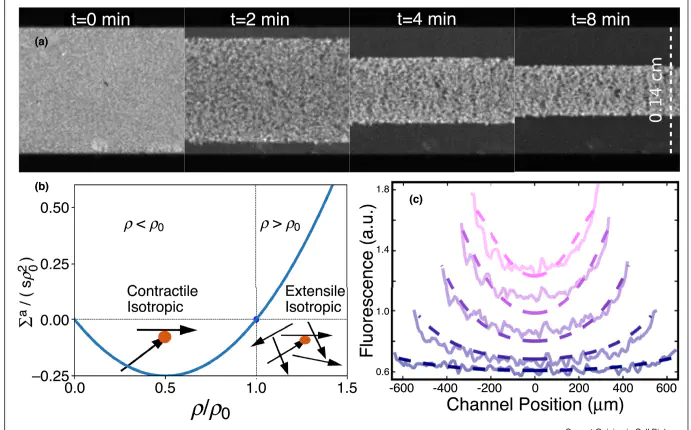
Abstract
The cellular cytoskeleton is an active material, driven out of equilibrium by molecular motor proteins. It is not understood how the collective behaviors of cytoskeletal networks emerge from the properties of the network’s constituent motor proteins and filaments. Here we present experimental results on networks of stabilized microtubules in Xenopus oocyte extracts, which undergo spontaneous bulk contraction driven by the motor protein dynein, and investigate the effects of varying the initial microtubule density and length distribution. We find that networks contract to a similar final density, irrespective of the length of microtubules or their initial density, but that the contraction timescale varies with the average microtubule length. To gain insight into why this microscopic property influences the macroscopic network contraction time, we developed simulations where microtubules and motors are explicitly represented. The simulations qualitatively recapitulate the variation of contraction timescale with microtubule length, and allowed stress contributions from different sources to be estimated and decoupled.